Last Updated on: 31st January 2025, 02:46 pm
Welcome to the vibrant world of wine tourism, where exploration knows no bounds in 2025. This year invites wine lovers to step outside the typical tasting rooms and delve into the richness of various wine regions across the globe. From magnificent boat rides on Italian lakes to exhilarating whale watching in Australia and even surfing in Madeira, the quest for adventure intertwines with the love for fine wine. As we explore the best countries for wine, anticipate breathtaking landscapes and unique cultural experiences that elevate your journeys.
Get ready to uncover what makes each wine region not just a destination, but a story waiting to be told. Whether you’re sipping on a robust red in the Douro Valley of Portugal or savoring the crisp whites of Marlborough in New Zealand, the year ahead promises to be one for the books—a true celebration of 2025 wine destinations. Join us in this journey, inspired by innovators from Armenia to Bordeaux, as we reveal the magnificent viniculture awaiting your enthusiastic palate. For a glimpse into what these destinations have to offer, check out this insightful guide on the best wine travel destinations for 20251.
Key Takeaways
- Wine tourism is evolving, encouraging exploration beyond conventional tasting rooms.
- Adventure experiences, such as boat rides and whale watching, enhance wine appreciation.
- Regions like the Douro Valley and Marlborough offer unique climate and terroir influencing wine quality.
- Newly emerging wine areas like Armenia and South Africa are making waves in the wine industry.
- 2025 highlights the importance of experiencing distinct wine cultures globally.
Introduction to Wine Travel
Wine travel represents a unique avenue to explore local cultures through the lens of viticulture, allowing travelers to engage with both the landscapes of vineyards and the dining experiences that make each region distinct. As the demand for immersive experiences grows, the wine tourism industry continually adapts, offering global wine experiences that encompass local cuisine, scenic explorations, and vibrant social settings. Top destinations for wine travel in 2025 include Alsace, Bordeaux, Bourgogne, Champagne, Loire, and other renowned regions, catering to different tastes and preferences2.
Travelers can expect full-service experiences during educational wine tours from April to November in 2025, with limited seat availability highlighting the exclusivity of these opportunities2. These immersive journeys typically include lodging, meals, and visits to multiple wineries each day, tailored specifically for serious enthusiasts and professionals alike2. This growing trend underscores the blend of wine exploration with relaxation and active engagement in local culture, forming memorable journeys that resonate long after the last sip.
The Rise of Wine Tourism in 2025

The year 2025 has marked a pivotal moment for wine tourism trends as consumers increasingly seek immersive travel experiences. Wine tourists are now looking beyond traditional vineyard visits, wanting authentic encounters with local cultures and cuisine. As tourism evolves, luxury accommodations and gourmet dining are becoming staples in wine regions, evidenced by the hospitality sector’s contribution of 70 percent to revenues in Cormons, illustrating the economic impact of wine-driven tourism3.
Regions such as Collio have seen considerable growth, with over 150 clients at the Simonit&Sirch vine pruning institute further underpinning the global wine market’s expansion3. France, a leading player, welcomed 10 million wine tourists in 2016, generating revenues of 5.2 billion euros annually, showcasing the prevalent interest in these experiences4. Enhancements in infrastructure, including high-quality hotels and restaurants, provide vital support to the influx of visitors seeking upscale adventure and exploration in wine regions.
Notably, the “Collio Experience” combines wine with food, culture, and nature, catering to a diverse audience eager for various adventures3. This holistic approach reflects a broader shift in the global wine market, with travelers more inclined to explore new and unique offerings, such as Pinot Grigio wines made in traditional styles3. The trend toward sustainable practices, highlighted by initiatives in wineries worldwide, ensures that wine tourism not only enriches the travel experience but also promotes responsible tourism.
Best Countries For Wine
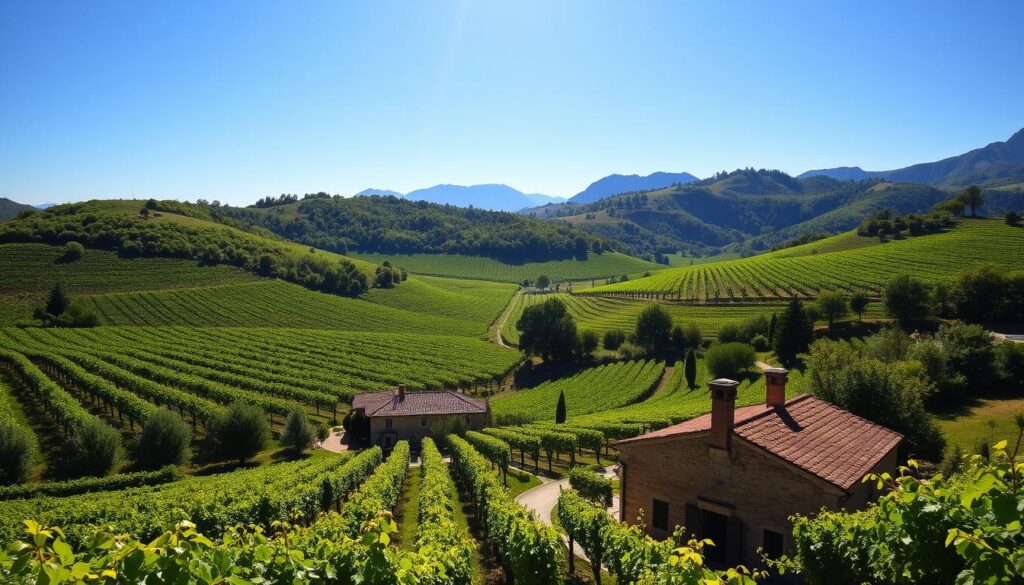
The landscape of global wine production continues to evolve, with various regions contributing to the diversity and richness of the wine experience. Understanding the characteristics that define the best countries for wine involves exploring climate, soil, and established winemaking traditions. Notable wine regions across the globe adapt techniques and grape varieties that suit their unique terroirs. Various contenders have emerged to showcase their strengths in the world of wines, indicating an exciting future ahead.
Understanding Wine Regions
Leading wine-producing countries like France, Italy, and Spain set the standard for quality and volume. France, as the top wine producer globally, generates 3,641,900 liters per year, while Italy follows closely with 4,250,000 liters annually5. Spain, holding the distinction of having the largest grape-cultivating area in Europe, produces 3,248,000 liters each year, contributing to its sizable influence in the wine industry6. Other regions such as South Africa, with its rich winemaking heritage, and Argentina, known for its popular grape varieties like Malbec, display the world’s multifaceted wine culture.
Global Wine Production Trends
As global wine production shifts, regions including Sicily, Washington, and Greece are rising to prominence. These areas are becoming well-known for their unique offerings, attracting wine enthusiasts seeking new experiences. For example, California’s lush vineyards are famous for premium Chardonnay and Cabernet Sauvignon production5. The United States ranks as the fourth largest wine producer, with an impressive production of 2,333,900 liters yearly5. Furthermore, regions like Australia leverage their diverse landscapes, leading to distinctive flavors in wines, particularly notable in the Yarra Valley6. The global community of wine lovers eagerly anticipates the flavors these emerging regions will bring.
Top Wine Destinations Around the World
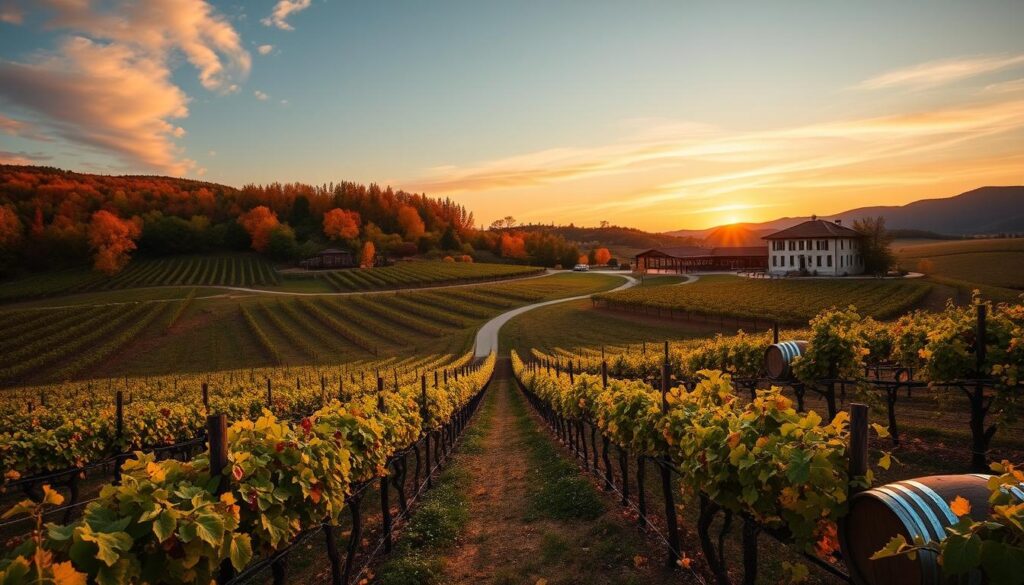
Wine tourism thrives in regions showcasing distinct wine cultures and deep-rooted winemaking traditions. Among the *top wine destinations*, France stands out with its profound heritage, particularly in Bordeaux, where over 290,000 vineyards flourish and account for about 90% red wine production7. The country’s annual yield of wine ranges between 50 to 60 million hectoliters, equivalent to approximately 7 to 8 billion bottles8. Italy follows closely with a prominent wine culture evident in its diverse regions. The Piedmont area, known for Barolo wine made from the Nebbiolo grape, has only 30% of land suitable for wine production, accentuating the uniqueness of its offerings8 and7.
Exploring Vibrant Wine Cultures
Travelers are captivated by the diverse wine cultures in places like Spain’s Rioja region. This area is segmented into three sections, with specific aging requirements for wines like “Gran Reserva,” enhancing the journey through its storied landscapes7. Portugal, known for producing Port wine in the Douro Valley, supports a rich maritime climate that yields about 500 to 600 liters of wine annually8 and7. These experiences result in delightful moments such as wine bar hopping, rooftop tastings, and immersive vineyard tours that reveal the essence of each locale.
Winemaking Traditions in Each Country
The beauty of wine tourism is reflected in innovative approaches to traditional winemaking traditions. In California, the Napa Valley leads with 40% of its production focused on Cabernet Sauvignon, showcasing the advantages of varied geography7. Emerging regions like Texas Hill Country are gaining recognition with producers experimenting with the local terroir and unique grape varieties, while Santa Ynez Valley cultivates cool-climate wines like Pinot Noir and Chardonnay9. These evolving practices highlight a renaissance in global wine production, prompting wine enthusiasts to explore the uncharted territories of lesser-known vineyards and their remarkable stories.
Highlighting Prestigious Vineyards
Exploring the world of wine involves venturing into prestigious vineyards known for their exceptional quality and dedication to winemaking. These vineyards offer unforgettable vineyard experiences that celebrate both tradition and innovation, exemplified by producers such as Leeuwin Estate in Margaret River and Bodegas Ribas in Mallorca.
Notable Vineyard Experiences
Visitors to these renowned regions can engage in immersive vineyard experiences that highlight the intricate processes behind wine production. From vineyard tours to intimate tastings, wine enthusiasts can learn about the unique wine appellations that define different terroirs. For instance, tasting Bordeaux wines allows one to appreciate the mastery behind blending Cabernet Sauvignon on the Left Bank and the lush Merlots of the Right Bank, showcasing a perfect marriage of tradition and modern techniques10. Tuscan estates, where Sangiovese thrives, present visitors with the chance to savor iconic Chianti and Brunello di Montalcino.
Unique Wine Appellations
Understanding unique wine appellations is an integral part of appreciating these vineyards. The wine regions across France, Italy, and Spain, among others, are characterized by distinct geographic indicators that influence their flavor profiles. For example, the microclimates in Burgundy contribute to a range of ethereal wines from Pinot Noir and Chardonnay10. Spain’s Rioja, with its age-worthy Tempranillo-based reds, demonstrates the art of oak aging and regional terroir10. These elements create a narrative that makes a visit to each vineyard essential for any wine travel enthusiast. Across the globe, these prestigious vineyards set the stage for unforgettable vineyard experiences that extend beyond just tasting wine.
Emerging Wine Regions to Watch
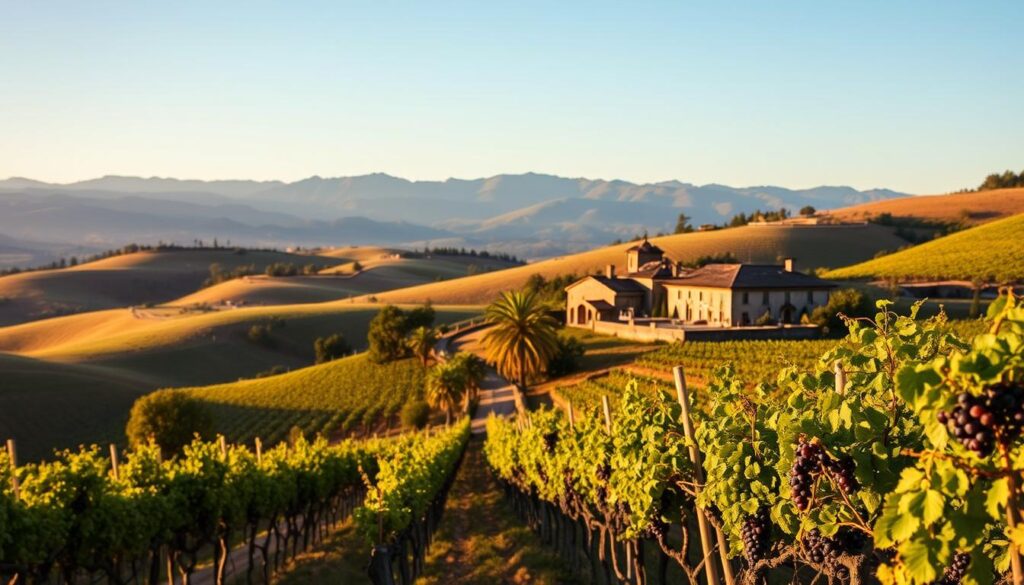
Wine enthusiasts are witnessing a shift in focus toward emerging wine regions that boast captivating potential for high-quality wines. Countries like Armenia and New York’s Finger Lakes are gaining recognition for their unique terroirs and indigenous grape varieties. These lesser-known wine areas offer distinct characteristics that challenge traditional perceptions of winemaking, attracting adventurous palates eager for fresh experiences.
With international attention on these new wine destinations, regions are revitalizing their production methods and wine styles. In California’s Temecula Valley, nearly fifty wineries champion innovation alongside heritage. Meanwhile, the Wellington Wine Route in South Africa, dubbed “The Cradle of Wine,” is celebrated for producing unique varieties like white pinotage11. In New Zealand, the Marlborough District stands as the country’s largest winegrowing region, featuring four different valleys11.
As emerging markets continue to develop their winemaking industries, prices of wines from these fledgling regions are becoming more accessible. Israel’s Yatir Winery exemplifies this growth, with significant price appreciation over the years, showcasing the potential for quality wines12. Furthermore, China’s evolution in grape growing complements its ascent as the seventh-largest wine producer globally, thanks to rising temperatures and advancements in technology. The dynamic landscape of winemaking emphasizes the importance of exploring lesser-known wine areas, nurturing both established traditions and experimental approaches.
| Wine Region | Significant Feature |
|---|---|
| Temecula Valley, California | Home to nearly fifty different wineries |
| Wellington, South Africa | Known for unique varietals like chocolate pinotage |
| Marlborough District, New Zealand | Country’s largest winegrowing region with four valleys |
| Yatir Winery, Israel | Significant price appreciation and quality wines |
| Finger Lakes, New York | Notable for its indigenous grape varieties |
As the global landscape of wines evolves, the discovery of emerging wine regions encourages wine lovers to embrace new flavors and experiences that challenge their tastes. It’s an exciting time for exploring the world of wine beyond the traditional boundaries, inviting all to indulge in the richness that these regions have to offer.
The Influence of Climate on Wine Quality
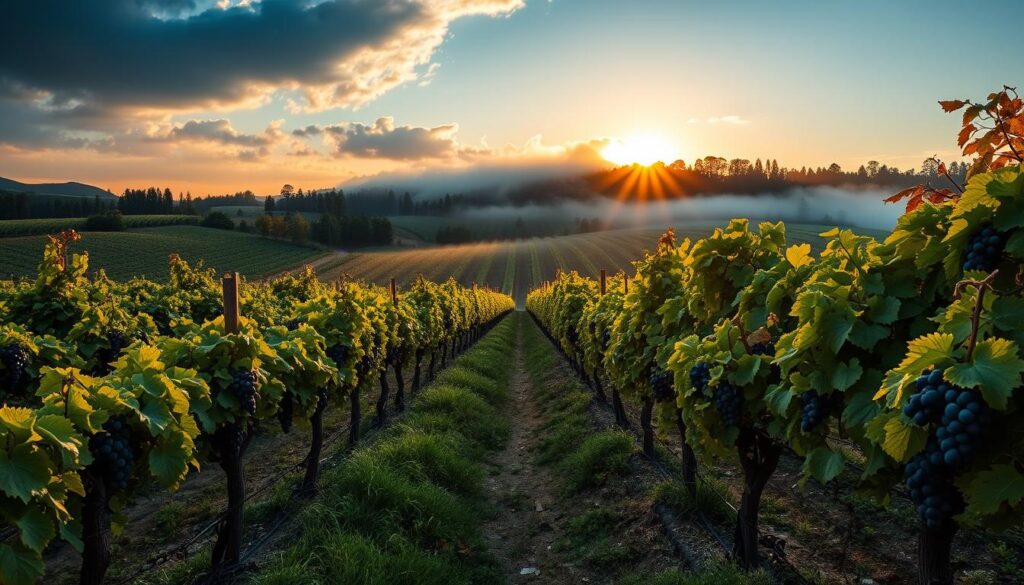
Wine production is intricately tied to climate, impacting the final quality of the product. Variations in temperature and weather patterns significantly affect grape development, which directly influences flavor profiles. Climate affects the characteristics of wines, distinguishing those from cool regions with lower alcohol content and higher acidity from warm climate wines, known for their bolder flavors and richness13. The average temperature for optimal grape growing is usually between 55-70°F (13-21°C), creating ideal conditions for viticulture13.
How Terroir Affects Flavor
The concept of terroir encapsulates the unique environmental conditions of a vineyard, including soil, climate, and geography, all of which contribute to the distinctiveness of wine quality. Terroir is essential in wine production, often mentioned in discussions contrasting traditional European practices with modern, industrial techniques13. Factors such as solar radiation, precipitation, and wind dynamics play significant roles in shaping wine character13. With climate change causing shifts in growing seasons, these factors become even more impactful. For instance, over the last ten years, scientific data indicates that extreme weather has modified grape harvest timings, occurring up to two weeks earlier than usual due to rising temperatures14.
The interplay between climate change and terroir extends beyond immediate effects. European wine regions like Bordeaux are adjusting their practices in response to these changes, which include experimenting with new grape varieties to maintain quality and adaptability through flexibility in vineyard management1415. Grapevine growth and development are continuously assessed to minimize the adverse effects and enhance the robust flavor profiles that discerning wine enthusiasts appreciate15.
Wine Exports and Global Market Impact
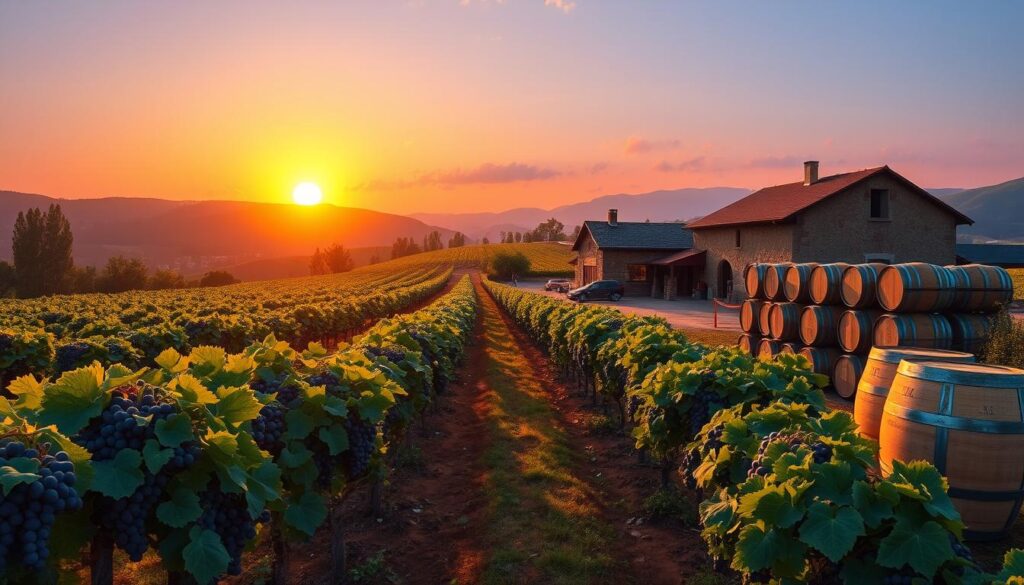
The global wine industry is experiencing notable growth, driven significantly by robust wine exports. In 2023, the wine market is estimated to be valued at $1,709.27 billion, achieving a compound annual growth rate (CAGR) of 5.7%16. France has maintained its status as the largest wine exporter, shipping over 14 million hectoliters in 2023, while Spain leads in volume with approximately 24 million hectoliters17. Countries such as Italy and Chile are actively competing in the international arena, with Italy exporting around 20 million hectoliters17.
Shifting market trends show a growing preference for organic and sustainable wines, as consumers become increasingly conscientious about their choices. This evolution demands adaptations within the global supply chains, showcasing the dynamic nature of wine exports18. Lithuania, for example, reported wine exports totaling $215.64 million in 2022, mainly serving as a gateway to Russia’s wine market, with an impressive 92% of its exports directed there18.
Emerging regions like South Africa and the Douro Valley are making waves in the global marketplace, attracting attention from both connoisseurs and casual drinkers alike. These markets are significant for reshaping the wine landscape and expanding the variety of wines available for international consumption. Collectively, these trends signal a transformative period for the global wine industry.
Experiential Wine Tasting Activities
Wine tasting has evolved into a multifaceted experience that offers more than just the pleasure of sipping fine wines. Today’s wine enthusiasts seek immersive wine experiences that engage all senses while expanding their knowledge about viticulture.
Innovative Wine Tours and Events
Around the globe, over 3500 wineries provide unique wine tasting activities that cater to diverse interests and preferences. With more than 6000 wine experiences available for booking, visitors can explore everything from guided tours showcasing regional delights to intimate vineyard strolls with tailored tastings. This accessible variety of experiences ensures that everyone can find an exciting way to appreciate wines from regions like Bordeaux, Tuscany, and Napa Valley19.
Innovative tours frequently merge culinary elements with wine appreciation, creating unforgettable events such as themed tastings led by renowned chefs. Travelers rave about participating in exclusive events that highlight local produce alongside exquisite wines, ensuring a perfect pairing for their palate. The average price range for guided wine tours varies from NZ$34.00 to €330.00, offering options for every budget19.
Those who are keen to delve deeper into the winemaking process can enjoy numerous winery tours worldwide that provide insights into traditional techniques and regional customs. France boasts iconic wineries like Château Lafite-Rothschild and Maison Ruinart20. Additionally, immersive wine experiences can occur in Spain, Italy, and South Africa, showcasing the global appeal of wine tourism.
Whether exploring the scenic wine trails of South Africa’s Cape Town or attending vibrant wine festivals in Italy, the opportunity to connect with the culture of wine has never been greater. Guests can even purchase their favorite wines directly from the vineyards, delivered right to their door19. For travelers eager to embark on these exquisite adventures, platforms like Winalist offer seamless booking options, ensuring a fantastic wine journey awaits.
Conclusion
In summary, exploring the best wine destinations in 2025 opens a world of possibilities for wine enthusiasts and casual travelers alike. Countries like France, Italy, and Spain are celebrated for their rich viticultural histories and diverse offerings, producing iconic wines such as Burgundy’s Pinot Noir and Tuscany’s Sangiovese. Such destinations not only emphasize the significance of terroir but also provide a unique backdrop that enhances the overall experience of wine tourism2122.
As we engage with various wine regions—each showcasing distinct winemaking traditions and practices—the allure of travel planning becomes apparent. Whether it’s the immersive vineyard tours in Piedmont or the innovative approaches to sustainability in New Zealand, these experiences deepen our appreciation for global viticulture. Every sip tells a story, making wine tourism an adventure worth embarking on21.
By venturing into these mesmerizing locales, one can uncover the authentic essence of local wines and the cultures they represent. The journey toward understanding wine transcends mere tasting; it cultivates connections that enrich our lives and offer lasting memories. Thus, we encourage you to take your next step into the world of wine travel—full of flavor, culture, and unforgettable experiences2122.
FAQ
What are the best countries for wine in 2025 ?
How does climate affect wine production?
What are some unique wine tourism experiences?
Why is wine tourism growing in popularity?
What defines a wine region?
What role do wine exports play in the global market?
What are some emerging wine regions to explore?
How important are winemaking traditions in wine production?
What should I look for when visiting prestigious vineyards?
How can I combine wine exploration with local culture?
Source Links
- https://www.forbes.com/sites/katedingwall/2024/01/03/7-wine-regions-to-watch-in-2024-according-to-sommeliers/
- https://www.winescholarguild.com/tours
- https://wineeconomist.com/2024/07/
- https://hospitality-on.com/en/trends/development-wine-tourism
- https://www.affordablewine.co.uk/pages/wine-producing-countries
- https://www.farandwide.com/s/worlds-best-wine-countries-4f26490fec784cea
- https://drinks.com/wine-101/what-are-the-top-wine-regions-in-the-world
- https://www.firstleaf.com/wine-school/article/top-wine-regions
- https://vinepair.com/articles/best-wine-travel-destinations-2023/
- https://www.wienscellars.com/the-wine-lovers-travel-guide-top-vineyard-destinations-2/
- https://samantha-brown.com/destinations/lesser-known-wine-regions/
- https://www.vinovest.co/blog/emerging-wine-regions
- https://www.guildsomm.com/public_content/features/articles/b/gregory_jones/posts/climate-grapes-and-wine
- https://worldoffinewine.com/news-features/climate-change-wine-industry
- https://www.ncbi.nlm.nih.gov/pmc/articles/PMC10395292/
- https://www.tradeimex.in/blogs/wine-importer-exporter-statistics-2023
- https://luxonomy.net/world-wine-trade-in-2023-leading-exporters/
- https://finance.yahoo.com/news/top-20-wine-exporting-countries-152137113.html
- https://www.winetourism.com/
- https://www.atlasguru.com/topics/5-favorite-destinations-for-cheese-and-wine-tasting/333697a5-ad20-4a79-b3bf-c132980eadb5/
- https://www.tikveslondon.uk/post/the-best-wine-regions-in-the-world
- https://global-ichiba.com/blogs/gi-times/exploring-the-best-wine-regions?srsltid=AfmBOoq_n37aTh6DgSz8XittuEc1XaNnznKjdeAjtQDXcGGl3nX24NDr

As a passionate, global-thinking Real Estate Investor I am constantly looking for the best opportunities to invest in Properties. With Aparthotel.com I am building an All-In-One Global Real Estate Platform, where people can analyse, rent or invest in properties. Additionally I help Investors with comparing the best financing options as well as give detailed Consultation on the buying process for Real Estate Investments around the world. I am looking forward to sharing my knowledge on this Website and feel free to reach out to me if you have any questions.

Comments